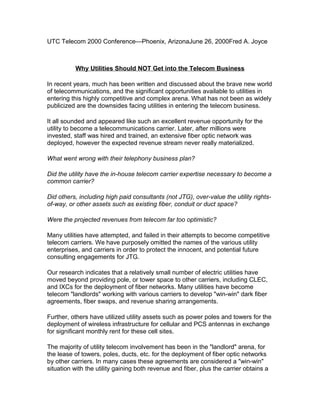The document discusses why utilities should avoid directly entering the telecom business as carriers and instead take a "landlord" approach by leasing assets like poles and towers to telecom companies. It provides examples of utilities that spent millions on fiber networks but failed to generate expected revenue as carriers due to lacking expertise, overestimating market potential, and underestimating competition. While some utilities have succeeded, most that attempted to compete directly with telecom carriers experienced significant financial difficulties. The author recommends utilities thoroughly research markets and competitors before any telecom ventures.





